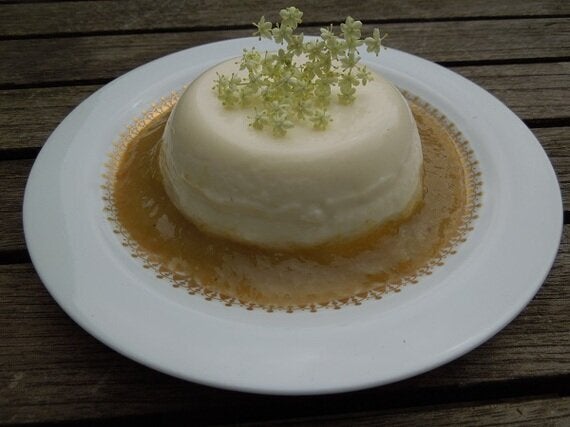
I think the best pannacotta I ever ate - in fact I think it was the first I ever ate - was years ago in Italy when I was doing a television feature on the Slow Food movement.
The lovely Slow Food people took us to a restaurant in a wisteria-covered courtyard close by their office. The food was good but I was so blown away by the dessert I can't remember anything else on the menu. I think it was the Osteria del Boccondivino - if you're ever in Bra in Piedmont, search it out and tell me if they still have pannacotta on the menu. I may just book a flight.
I don't know how they make theirs but I thought of that pannacotta when I was casting around for interesting things to do with my newly-made elderflower cordial. This is what I came up with.
The buttermilk reduces the over-all fat content while retaining the creaminess of the dessert and gives a pleasant lactic tang that marries well with the elderflower fragrance.
Elderflower and Buttermilk Pannacotta (serves 4)
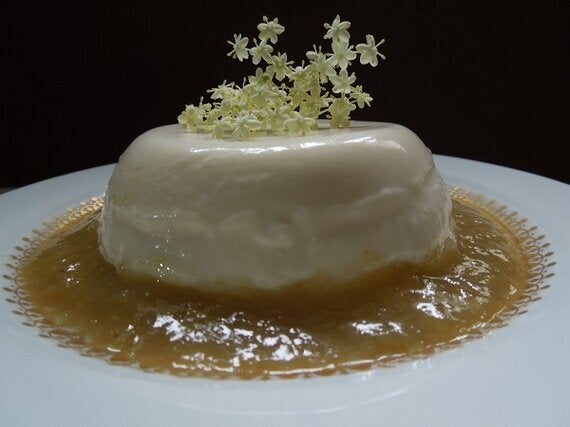
Ingredients:
250 ml double cream
250 ml buttermilk
40g vanilla caster sugar
75 ml elderflower cordial
2 1/2 sheets of gelatine (or vegetarian equivalent)
Method:
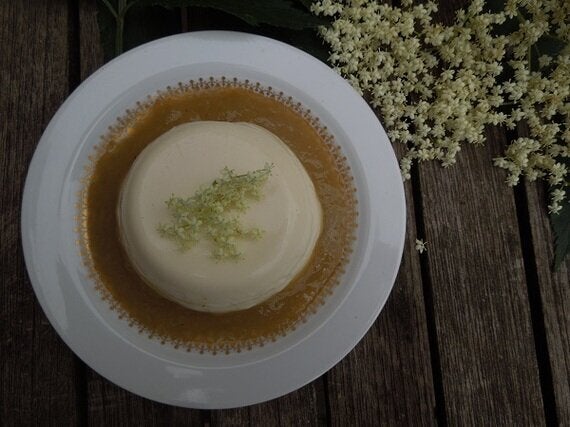
Break up the sheet of gelatine, place in a small bowl and soak it in cold water to soften.
On the stove, heat the cream with the the sugar until the sugar dissolves and the cream is just about to come to boiling point.
Remove the pan from the heat, squeeze the excess water from the gelatine and add it to the cream, stirring until it dissolves.
Add the buttermilk and stir well, then add the elderflower cordial and mix thoroughly.
Pour into dariole moulds or ramekins and put in the fridge to set, for at least four hours, or overnight.
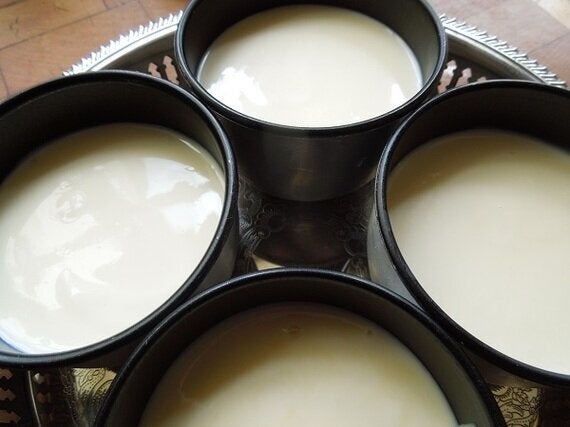
When you're ready to serve, dip the pannacotta moulds in hot water for just a few seconds to loosen them (or run a palette knife round them) and gently up-end them onto plates.
Serve with seasonal berries or a fruit coulis or compote. I made a gooseberry coulis, a classic combination with elderflower. It isn't a particularly fetching colour, but it tastes good and its sharpness contrasts well with the creamy pannacotta.
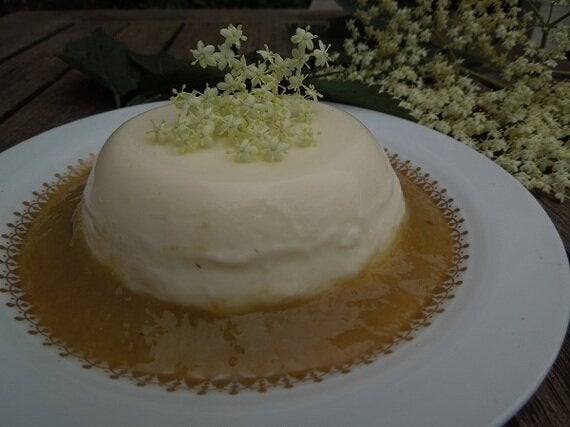
Just cook up around 300-350g of goosegogs with sugar to taste and a scant tablespoon of water (the gooseberries will release a lot of liquid - you won't need any water if they're frozen - in fact you may have to cook some liquid off), cook gently until the fruit has broken down and push through a sieve to give a smooth puree.
